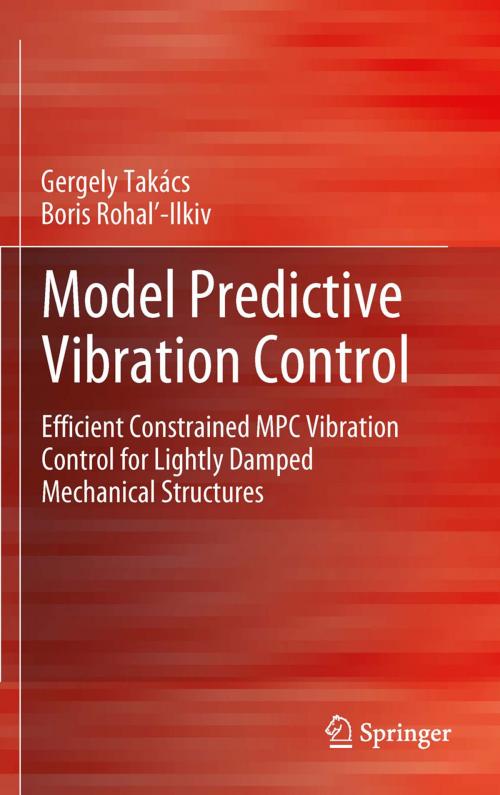Model Predictive Vibration Control
Efficient Constrained MPC Vibration Control for Lightly Damped Mechanical Structures
Nonfiction, Science & Nature, Technology, Automation, Mathematics, Applied| Author: | Gergely Takács, Boris Rohaľ-Ilkiv | ISBN: | 9781447123330 |
| Publisher: | Springer London | Publication: | March 5, 2012 |
| Imprint: | Springer | Language: | English |
| Author: | Gergely Takács, Boris Rohaľ-Ilkiv |
| ISBN: | 9781447123330 |
| Publisher: | Springer London |
| Publication: | March 5, 2012 |
| Imprint: | Springer |
| Language: | English |
Real-time model predictive controller (MPC) implementation in active vibration control (AVC) is often rendered difficult by fast sampling speeds and extensive actuator-deformation asymmetry. If the control of lightly damped mechanical structures is assumed, the region of attraction containing the set of allowable initial conditions requires a large prediction horizon, making the already computationally demanding on-line process even more complex. Model Predictive Vibration Control provides insight into the predictive control of lightly damped vibrating structures by exploring computationally efficient algorithms which are capable of low frequency vibration control with guaranteed stability and constraint feasibility.
In addition to a theoretical primer on active vibration damping and model predictive control, Model Predictive Vibration Control provides a guide through the necessary steps in understanding the founding ideas of predictive control applied in AVC such as:
· the implementation of computationally efficient algorithms
· control strategies in simulation and experiment and
· typical hardware requirements for piezoceramics actuated smart structures.
The use of a simple laboratory model and inclusion of over 170 illustrations provides readers with clear and methodical explanations, making Model Predictive Vibration Control the ideal support material for graduates, researchers and industrial practitioners with an interest in efficient predictive control to be utilized in active vibration attenuation.
Real-time model predictive controller (MPC) implementation in active vibration control (AVC) is often rendered difficult by fast sampling speeds and extensive actuator-deformation asymmetry. If the control of lightly damped mechanical structures is assumed, the region of attraction containing the set of allowable initial conditions requires a large prediction horizon, making the already computationally demanding on-line process even more complex. Model Predictive Vibration Control provides insight into the predictive control of lightly damped vibrating structures by exploring computationally efficient algorithms which are capable of low frequency vibration control with guaranteed stability and constraint feasibility.
In addition to a theoretical primer on active vibration damping and model predictive control, Model Predictive Vibration Control provides a guide through the necessary steps in understanding the founding ideas of predictive control applied in AVC such as:
· the implementation of computationally efficient algorithms
· control strategies in simulation and experiment and
· typical hardware requirements for piezoceramics actuated smart structures.
The use of a simple laboratory model and inclusion of over 170 illustrations provides readers with clear and methodical explanations, making Model Predictive Vibration Control the ideal support material for graduates, researchers and industrial practitioners with an interest in efficient predictive control to be utilized in active vibration attenuation.















